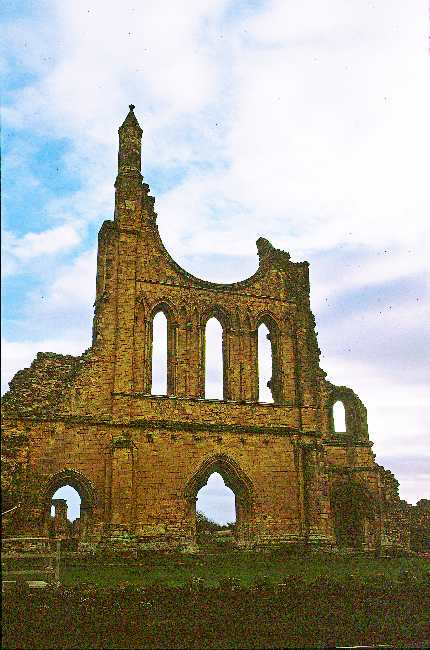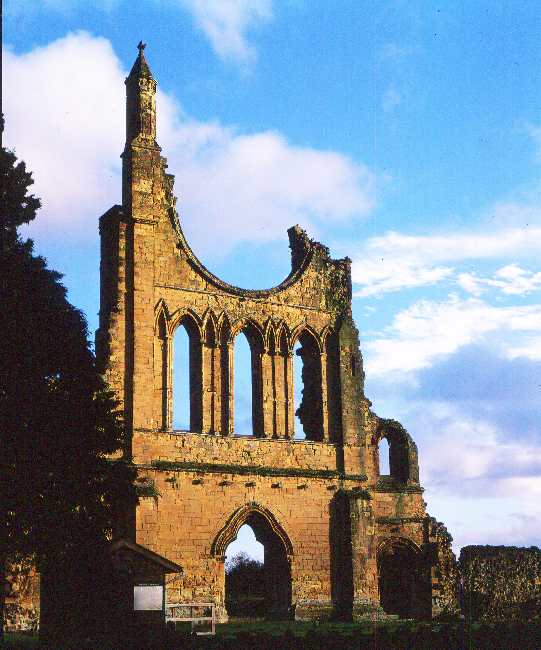| The rose - whose design was deduced from fragmented remains - bears a strong resemblance to the rose window of the gable of the south transept at York Minster which probably dates from the mid-1240s, but Byland's is slightly smaller, and has more elaborately carved detail, including trefoil heads to both arcades. Unfortunately the York window is the "only intact survivor from a large number of large rose windows in the region," suggests Stuart Harrison - c.f. the transept gables Beverley Minster. "There is good reason to suspect that the original east gable at Beverley featured a large rose window, and it may well be that the transept roses merely repeat the inner core of this lost window. Kirkham Priory seems to have been similar to Beverley in having a large rose window at its east end, and further north, the Chapel of the Nine Altars at Fountains Abbey, where the east gable appears to have incorporated a large rose window. All of these windows seem to have followed the traditional spoked wheel design which reached its most elaborate form in the great thirteenth century rose which once filled the west gable of Gisborough. This was in excess of 8 meters in diameter and had three tiers of spokes (12, 24 and 36) carrying trefoiled arches with foliate decoration on the soffits and elaborate paterae in the spandrels. In terms of date and construction it is closely related to the York rose but has some design details in common with the rose in the east gable at Fountains." |  |
 |